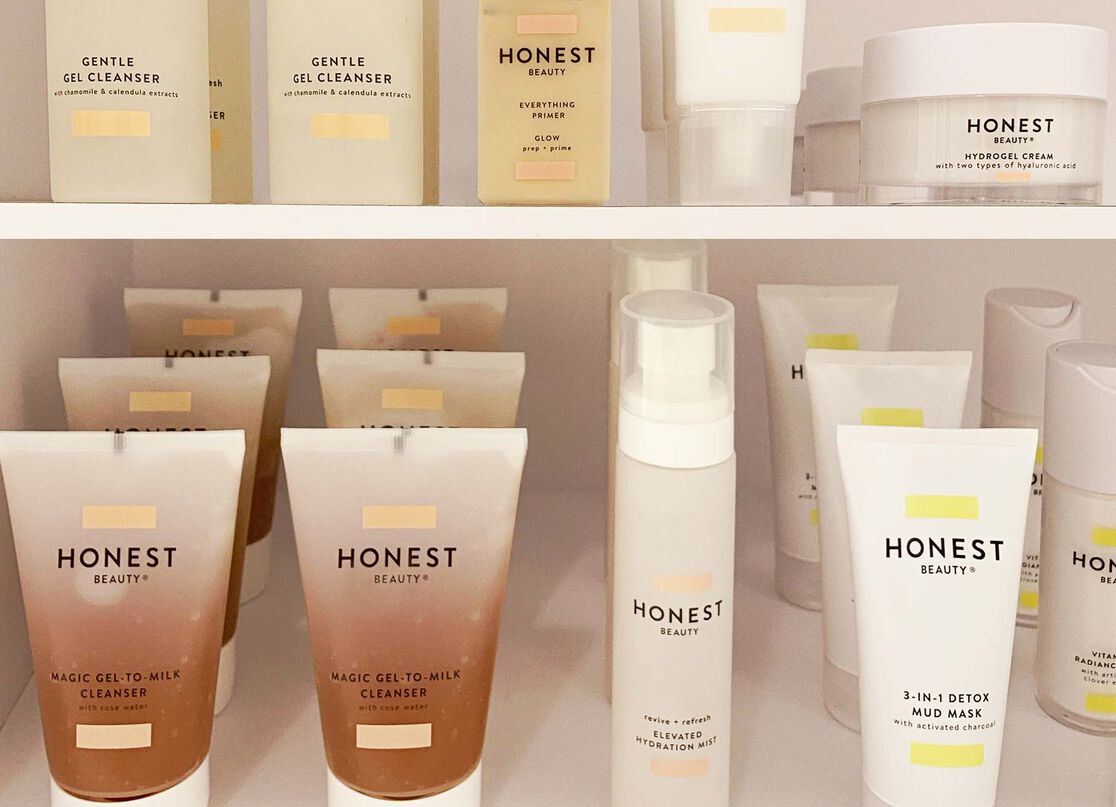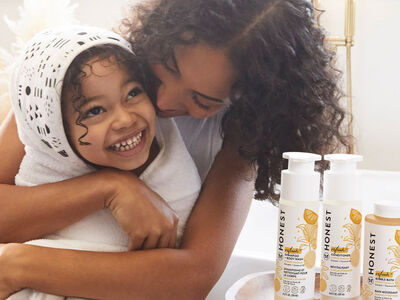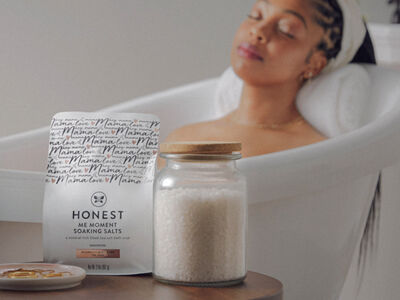Blacklisting parabens but have no idea what they actually are? You’re not alone. Parabens have been at the top of our Honest Beauty NO List™ from the beginning because we just don’t think they’re worth the potential risk. But just how risky are they? We enlisted Heather, our in-house toxicologist, to piece together the paraben puzzle — what the research really says, why we just say no when creating our formulas and how you can avoid parabens, too. But first, define paraben.
What is a paraben, exactly?
Even with all the hype around them, there are a lot of unanswered questions about parabens swirling around the internet. What is a paraben? Why are parabens bad? Or, more to the point, are they bad? According to Heather, the parabens used in cosmetics are a group of synthetic ingredients made by reacting various forms of alcohol with p-hydroxybenzoic acid (PHBA for short if you never want to pronounce that mouthful again). This creates a paraben, or a copycat reproduction of the same natural compound found in some mushrooms, coconuts and aḉai oil.
Why are parabens in beauty products to begin with?
Parabens have traditionally been used as a cosmetic preservative because they’re pretty cheap and easy to produce. Companies have been putting parabens in personal care products, including skincare and makeup, since the 1950s to prevent fungal, yeast and bacteria growth as well as extend shelf life. You’ll also find them in pharmaceuticals and sometimes even food.
Are parabens bad for people (actually tho)?
The health risks of parabens are hotly debated but several studies have shown that some parabens potentially disrupt the natural balance of the hormone (or endocrine) system in the body. Here’s a snapshot of the research (and controversy) so you have all the info you need to make the right beauty choices for you:
In 2004, a small study led by Dr. Philippa Darbre in the UK found parabens in samples of breast tumors leading to widespread concerns over their potential role in breast cancer. Critics pointed out that noncancerous tissue from healthy breasts weren’t tested for the presence of parabens, meaning that from this study alone we can’t exactly draw any conclusions about parabens’ influence on the development of cancer. Just because two things happen at the same time doesn’t mean one caused the other. Think about it. Ice cream sales and sunburns both go up in the summer, and, while they’re both loosely related to weather, eating ice cream definitely isn’t why you got that sunburn.
Still, Darbre’s study piqued researchers’ curiosity, and follow-up studies have helped us better understand the potential risks of parabens in beauty products.The long-term impact of parabens on overall human health is still unclear, but the body of evidence collected since 2004 has brought the following concerns into increasingly public light:
-
Many parabens can penetrate human skin and may be absorbed and transported via the bloodstream.
-
Intact parabens and metabolized (or broken down) parabens have also been found in human urine. This means that the human body may not be fully capable of metabolizing — or breaking down — these chemicals before...err, excreting them.
-
Some parabens have shown estrogenic potential (translation: they may be able to imitate mock estrogen in the body).
-
Some parabens have also shown antiandrogenic potential (again, translation: they may reduce or stop androgen, which is testosterone and its derivatives, from signaling in the body
-
Some parabens have also been associated with changes in thyroid hormone signaling, increased oxidative stress and DNA damage.
-
And, yes, some parabens have been linked to a potential increased rate of cell multiplication — a hallmark of cancer.
Need we go on? Now, none of these studies prove, beyond a doubt, that parabens are to blame for these observed health effects…but the results sure don’t absolve them either.
So how can you avoid parabens in your beauty routine?
Just remember these three words: Read. Your. Labels. Look for words that end in “paraben” — methylparaben, ethylparaben, propylparaben, butylparaben, heptylparaben, isobutylparaben, isopropylparaben and benzylparaben. Remember, parabens aren’t just in beauty products but also some pharmaceuticals and foods including baked goods, soft drinks, jams, jellies and dressings. If you want that paraben-free beauty life, read your labels carefully!
What does it mean when a beauty product is paraben-free?
Makeup that is paraben-free on the label is simply a helpful statement that it doesn’t contain any added parabens, which can save you time combing through ingredient lists to find all those aforementioned trigger words. However, it doesn’t mean that the product in question is free of other ingredients of concern. Understanding that particular brand’s formulation philosophy will tell you more about the decisions behind the formula — what goes in, what doesn’t and how they’re checking (and double checking) for overall safety.
Our Honest Beauty promise: made without parabens
While it’s been pointed out by researchers that parabens may be much less potent than the natural estrogen in our bodies, we’re thinking about cumulative exposures (i.e. how many times a person is exposed to these potentially endocrine-disrupting chemicals each day) and susceptible populations like pregnant women and children. With all of this in mind — and our Honest commitment to safeguard human health — we think it’s worth the extra effort to avoid parabens (and thousands of other ingredients on our NO List™ ) in our beauty products. We carefully select preservatives that make the most sense for that product type and use. To us, that’s what clean beauty means: mindfully formulated with ingredients we can prove are safe.
We aim to provide you with the most honest and credible information possible. This article was reviewed for accuracy by The Honest Team and was written based on trusted sources that are linked at the bottom of the article.
blog_review_statement








